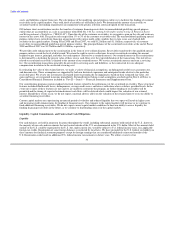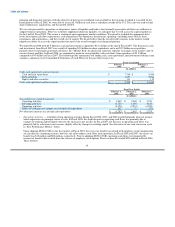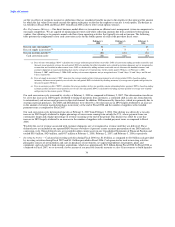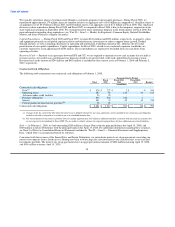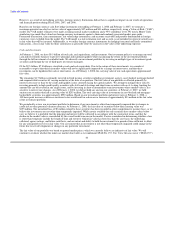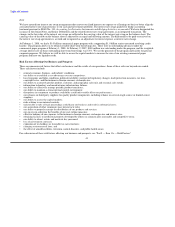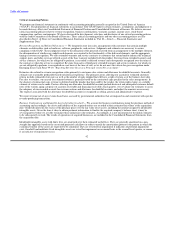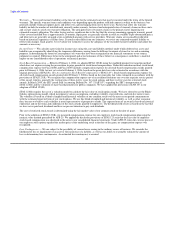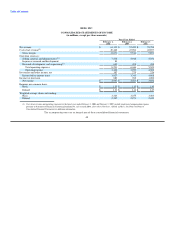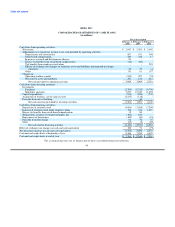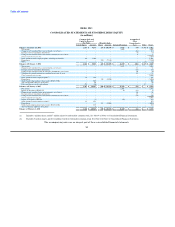Dell 2007 Annual Report Download - page 45
Download and view the complete annual report
Please find page 45 of the 2007 Dell annual report below. You can navigate through the pages in the report by either clicking on the pages listed below, or by using the keyword search tool below to find specific information within the annual report.
Table of Contents
Debt
We have entered into interest rate swap arrangements that convert our fixed interest rate expense to a floating rate basis to better align the
associated interest rate characteristics to our cash and investments portfolio. The interest rate swaps qualify for hedge accounting
treatment pursuant to SFAS No. 133, Accounting for Derivative Instruments and Hedging Activities, as amended. We have designated the
issuance of the Senior Notes and Senior Debentures and the related interest rate swap agreements as an integrated transaction. The
changes in the fair value of the interest rate swaps are reflected in the carrying value of the interest rate swap on the balance sheet. The
carrying value of the debt on the balance sheet is adjusted by an equal and offsetting amount. The differential to be paid or received on
the interest rate swap agreements is accrued and recognized as an adjustment to interest expense as interest rates change.
At February 1, 2008, we had a $1.0 billion commercial paper program with a supporting $1.0 billion senior unsecured revolving credit
facility. This program allows us to obtain favorable short-term borrowing rates. There were no outstanding advances under the
commercial paper program at February 1, 2008. At February 2, 2007, $100 million was outstanding under the program, and the weighted-
average interest rate on those outstanding short-term borrowings was 5.3%. We use the proceeds of the program and facility for general
corporate purposes. We believe we will be able to access the capital markets to increase the size of our existing commercial paper
program and meet our liquidity needs.
Risk Factors Affecting Our Business and Prospects
There are numerous risk factors that affect our business and the results of our operations. Some of these risks are beyond our control.
These risk factors include:
• general economic, business, and industry conditions;
• our ability to reestablish a cost advantage over our competitors;
• local economic and labor conditions, political instability, unexpected regulatory changes, trade protection measures, tax laws,
copyright levies, and fluctuations in foreign currency exchange rates;
• our ability to accurately predict product, customer, and geographic sales mix and seasonal sales trends;
• information technology and manufacturing infrastructure failures;
• our ability to effectively manage periodic product transitions;
• our ability to maintain a strong internal control environment;
• disruptions in component or product availability could unfavorably affect our performance;
• our reliance on third-party suppliers for quality product components, including reliance on several single-source or limited-source
suppliers;
• our ability to access the capital markets;
• risks relating to our internal controls;
• unfavorable results of legal proceedings could harm our business and result in substantial costs;
• our acquisition of other companies may present new risks;
• our ability to properly manage the distribution of our products and services;
• our success in achieving the benefits of our cost cutting measures;
• effective hedging of our exposure to fluctuations in foreign currency exchange rates and interest rates;
• obtaining licenses to intellectual property developed by others on commercially reasonable and competitive terms;
• our ability to attract, retain, and motivate key personnel;
• loss of government contracts;
• expiration of tax holidays or favorable tax rate structures;
• changing environmental laws; and
• the effect of armed hostilities, terrorism, natural disasters, and public health issues.
For a discussion of these risk factors affecting our business and prospects, see "Part I — Item 1A — Risk Factors."
41





